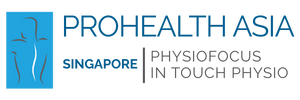From Couch to Confident: Your Post-Surgery Roadmap to a Full Recovery
Recovering fully after surgery requires a structured plan, patience, and professional guidance. It's a journey from the couch to confident living, focused on restoring strength, mobility, and independence.
Common Challenges After Surgery
Post-operative recovery can be challenging, often involving pain, swelling, and stiffness. Fear of movement can lead to inactivity, which paradoxically slows healing and can cause complications like muscle weakness and joint stiffness. Understanding that these challenges are a normal part of the process is the first step toward a successful recovery.
Your Roadmap to Recovery: The Phases of Rehabilitation
Effective post-surgery rehabilitation follows a progressive, phased approach to support healing and safely increase your activity level.
Healing Phase: The initial focus is on pain and swelling management, using gentle, controlled movements to restore basic mobility. A physiotherapist may use modalities like ice and electrotherapy to aid this process.
Movement Phase: As healing progresses, the focus shifts to active exercises. Regular, guided movement is crucial to improve range of motion and prevent long-term stiffness.
Strengthening Phase: Once healing is solid, a physio introduces progressive strength training and functional exercises. This phase is designed to rebuild muscle strength and restore your ability to perform daily activities independently.
Functional Restoration & Return to Activities: The final phase involves tailored, activity-specific exercises. The goal is to prepare you to safely return to work, sports, or your daily routine with confidence, minimizing the risk of re-injury.
How Physiotherapy Supports You
Physiotherapy is essential for a smooth recovery. A skilled physiotherapist provides:
Personalized assessments to create a plan that fits your specific needs.
Hands-on therapy to reduce pain and improve joint mobility.
Guided exercises for each recovery phase to ensure proper form and prevent complications.
Education on safe movement, posture, and activity modifications to empower you in your own healing journey.
By following a structured recovery plan and seeking professional support, you can turn the temporary pause of surgery into a strategic step toward reclaiming your active, confident life.

